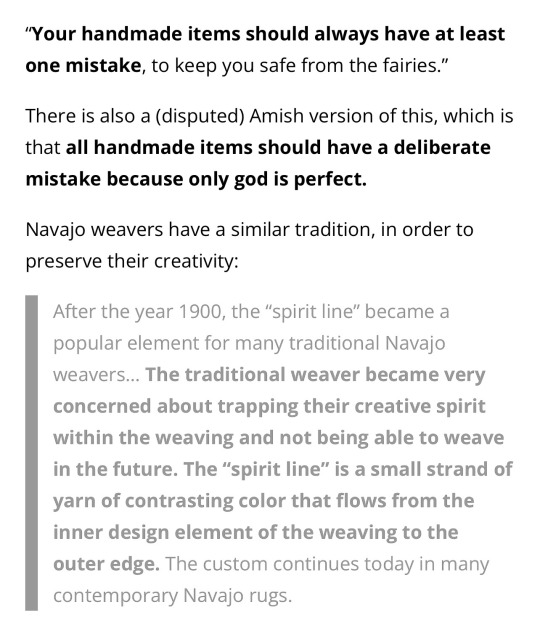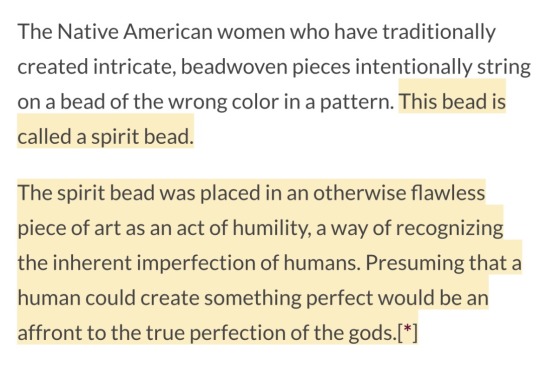A blog documenting the interesting things I've found at museums.
Don't wanna be here? Send us removal request.
Note
As someone who got to be in that bar in London to witness Tyler's first Bloody Mary and hear the terrible French accent, if there's anything you read today, it's this!
What’s the history of the Bloody Mary cocktail?
In 1917, Chef Louis Perrin, working in a hotel in French Lick, Indiana (what a name for a place) ran out of oranges and used tomatoes instead, inventing tomato juice as we know it today.
(Citation needed, this is a topic with a fair amount of discussion and it's almost certain that Perrin did not actually invent tomato juice. I mean... it's juiced tomato, a fair argument is that it's nature's creation or Gods', whatever keeps your boat afloat. It is mainly put to emphasize that the popularity of tomato juice was burgeoning or resurging at this time.) (I do think he was the first to use it in drinks? But I haven't done any juice research, I beg of you, there is other stuff to talk about (although now; I am intrigued.)
it should also explain why then, in France 1921, we finally have our first claim of the Bloody Mary!
Stating that Fernand Petoit created it in the New York Bar (Now called Harry's New York Bar) in Paris.
The confusion starts here folks!
I don't quite believe Fernand Petoit was the originator of the Bloody Mary. Frankly I'd love to be proven wrong and have this be the easiest question to answer so I can move on with the rest of it's history, but there are two things that frustrate me to think about.
1: I can only find the claim of 1921 being attributed to his grand daughter, rather than him directly. I'd be inclined to just believe historical wear-and-tear on this one, but:
2: He does have a direct quote in 1934 that describes a modernization of the Bloody Mary:
" -it was really nothing but vodka and tomato juice when I took it over"
I may be picking at words. But who says 'take it over' when they are confidently sure they've created it, If it were 1921 -way before all other claims?
To clarify, he's also right. He took the Bloody Mary and ran with it, most people site him as the creator for certain.
All the stories from here get even less clear, to prepare you.
If we zoom a decade forward to the early 1930s, and across the globe to actual New York: We find Henry Zibikiewicz.
There is almost zero information about Henry Zbikiewicz I could find, apart from that he worked as a bartender at 21 Club in New York, and that the bar claims he invented the Bloody Mary.
Let's take a short interval to talk about Henry Zbikiewicz and dead-end research.
I am under the belief that Henry Zbikiewicz was a bartender at 21 Club, and existed. I have found many different utterly too brief ancestry reports and other personal profiles of him (that state that he lived and died, but nothing else), besides this I have no confirmation.
While I would love to search the ends of the earth to discover the truth behind him and his background, I know it either does not exist, or doesn't exist to be found by amateur researchers (self-reference). A lot of information these days is behind pay-walls and internet dives about as deep as the Mariana (trench), and I unfortunately do not have all the time in the world.
What is especially upsetting for me though is finding enough.
I'm certain he existed.
I'm certain he lived.
I am not certain on anything else.
Let's take a longer interval on the nature of death and memory, along my journey to finally discover the Tumblr max word count.
Throughout my life I have always enjoyed graveyards. They are quiet, serene, undeniably holy/weird/sacred/creepy (change as required); the perfect place to be alone with this feeling of connection still running through the stones and the ground you walk beneath.
I'm quoted as saying 'I could die before you' as a small child, in response to my mother telling us about her refusing medications.
I feel as if this explains my relationship with death quite well, I was aware of it and have interacted with it in a casual way for my whole life.
Ramble, ramble, blah, blah, blah, this is all to say:
I don't fear death. I don't remember a time in my life I did fear death, honestly.
But; being forgotten?
That has always terrified me more than perhaps anything else in this world.
So the grim reaper will have to hold off. Till I do something memorable (I already have, and so have you, it's called being loved and loving).
I hope Henry Zbikiewicz is resting comfortably, I hope somewhere there's a family that is his or a friend that has told a tale of him.
These aren't answerable research questions, they'd be intrusive to find the answers to if they were, but they are so hyper-specific I doubt anyone has taken the time to find and ask.
I'd like to offer my favourite remembrance ritual to you, in trade for giving you existential dread: Go into a graveyard, find a grave (I prefer the older ones or ones that are not up kept, but any is perfectly fine) and recite their name for the week.
This way their memory continues, a little tiny bit of it. A name, alas cannot possibly contain all the things that anything is and was, or all the journeys it went down to end in our same shared fate of belonging to the ground.
A Bloody Mary is in this way quite cyclical. Tomatoes natively grow in France, so along with being a cheap post-war resource, (and good lord did France take a huge blow after The Great War (or WW1) but this is a different subject) it is a symbol of new life. Vodka, is a process of decomposition and fermentation (as all alcohols are) and so I feel represents death in a way.
The other well-known (how much knowledge do normal people have of any of this?) story of invention includes George Jessel, noted 1920's comedian and a socialite named Mary (which is where I swiftly transition from invention to naming).
Apparently he fixed the concoction in order to sober up quickly while hiding the smell of alcohol from his wife, then, when his friend Mary asked to try, it was spilled on her. To which she reportedly said:
'Now you can call me Bloody Mary!'
From the 1920's (anecdotal) it is posited that it was made for a Vladimir Smirnoff (yes, of vodka fame) and named Bloody Mary after the inability to pronounce the Slavic syllables in the name (???).
That absolutely STUMPED me until I actually said it aloud a couple times, in a really bad French accent. The 'Vl' quickly turns into a 'Bl' and can see how the rest slips into place. I hope it was something they were laughing about rather than laughing At Vladimir for.
But according to the manager of that same bar (In the 1920's again, he claims), the drink was named after the first person who ordered it. The first said it reminded him of his girlfriend, who he met in a cabaret called The Bucket Of Blood (naming convention match, not the same show), her name of course being Mary.
But! In the 1930's, where Fernand's cocktail is confirmed, he says himself it was called the 'Red Snapper'!
It was called the 'Mary Rose' in a publication from El Floridita in 1939, and claimed as a new cocktail in Life magazine (MAY be the December 7, 1942 magazine as I can find no other mention of drinks on the extensive list of life magazines (yes I looked through all of them)) as the 'Red Hammer'.
So, everyone says something different, and you have to be a special kind of crazy to look through all of it (you're welcome).
There's one more story, and then I'll leave you, I do hope this has been entertaining, I have worked really hard at this in my spare time to make this awful jumbling mass of spoken word information. I do think I've failed slightly at that.
I'm sure all you brits have been waiting, but bide your time just a couple more seconds before I say one more thing:
There is another story of the Bloody Mary, but I don't want to tell it, because it's not history yet. The violent crime in Chicago and the amount of bars playfully nicknamed 'The Bucket of Blood' there over the years are a later claim to the Bloody Mary. It's a story of a waitress called Mary at one of these 'Buckets' and as much as I think that deserves light shed on it, frankly my mental state is not stable enough to.
I want to try my best to be an ethical source of information, and because of this I do want to mention it, but a longer discussion is not going to be healthy for me right now.
So, with that in mind, I have one last story to tell you.
The nickname 'Bloody Mary' for Mary Queen of Scots, or Mary I is first seen written in a historical series by Charles' Dickens named 'A Child's History of England' in early 1851 to late 1853.
She got her name from the over 280 protestants she had burned during her reign (July 1553- 17 November 1558), although it's disputed whether she was called 'Bloody Mary' by her protestant opponents.
Although this name is indisputably much older than any of the 1900's claims to the name 'Bloody Mary', it's hard to pinpoint if it is the true origin for the cocktail being called the 'Bloody Mary'. If it is the true origin, the people who invented the cocktail have tried very hard to find original reasons to call it that. If it isn't true, it is an odd but not implausible coincidence.
In the very end, when all the Mary dust has settled and all the peppercorns have been crushed into the mix, it's always a story of history and memory.
When the tomatoes are squeezed, the vodka added or left out, celery or parsley garnish presented, lemon juice, salt or just tomato juice.
What is the history of the Bloody Mary?
And who says there has to be one?
My first Bloody Mary was in London in a restaurant I don't remember the name of, before seeing Hadestown, a musical about memory and oral tradition, for my longstanding historical advisor (bullshit checker) 's birthday, it's all memory and perception, even at the beginning.
Now, in this moment, and in the past already for those reading (and you, future Tyler, editor extraordinaire). I sit eating eggs and drinking coffee and writing in a cafe I frequent in my town.
There will be a day I don't remember what the interior looks like, how the coffee tastes, what books I rest one of my arms on, and maybe it will haunt me, or maybe I won't care.
If you haven't had a Bloody Mary before, do!
It might not be your cup of Mary, but it tastes like spicy gazpacho soup and I really like it.
There will be a day you don't remember where you were when you first sipped one, what it tasted like, how much pepper was in it, what kind they used, if it had a full stick of celery in it or just the leafy bits or if it had no garnish at all-
-and maybe it will haunt you. You might go back on your memory and overwrite a grand experience of falling off a cliff, Bloody Mary clasped in one hand as the rocks narrowly avoided, you might tell yourself the harsh bite of the wind rushing by you, you may create perilous rocks below;
or maybe you won't care.
But wouldn't you rather have it (the memory) and decide how you feel about it later?
Try new things, or historical revisionism is kinda fine, whichever lesson you'd rather take,
Enjoy your Bloody Mary.
-Ace x
Indirect/various sources:
-A few drinks blog: Who invented the original bloody mary?
-Fernand Petiot: Wiki and Granddaughter blog post
-Life magazine 1942 Archives
-It always begins with a simple search. (Bloody Mary wiki)
Big thanks Henry Zbikewicz, and all the beautiful stories people tell about things, for existing.
And my Sibling, or my historical advisor, for giving me this idea at the restaurant. I almost lost my mind TWICE (Henry Zbikewicz and trying to find the exact Life volume) but it was overall, a very enjoyable experience.
Maybe the next post will take me less than 3 months to write! I doubt it, but the night is young.
7 notes
·
View notes
Text
so I got into grad school today with my shitty 2.8 gpa and the moral of the story is reblog those good luck posts for the love of god
1M notes
·
View notes
Text

Wheel-lock rifle crafted by Balthasar Rentsch, Germany, dated 1666
from Czerny's International Auction House
128 notes
·
View notes
Text

Silver mount, gold decorated matchlock torador, India, 1st half of the 19th century
from Czerny's International Auction House
122 notes
·
View notes
Text

Gold necklace with duckies, Eastern Roman/Byzantine, 4th-5th century AD
from the Walters Art Museum
3K notes
·
View notes
Photo

An Excptional Greek Late Classical Silver Rhyton (drinking vessel) in Form of a Stag’s Head Silver (partially gilt), Late Classical, ca. 400 B.C.E., provincial Greek work, Allegedly from the Black Sea Region.
3K notes
·
View notes
Text
I fucking hate James Tissot’s paintings because in ALL OF THEM there is ALWAYS someone staring right at you, but it’s not always immediately visible. You just feel watched by this mf. Sometimes the little shit is right there at the centre, but others the bastard is just gazing from the distance, it is CREEPY, my guys
247K notes
·
View notes
Text




Ornate gold and silver decorated flintlock rifle, India, 19th century
from Runjeet Singh Antiques Arms and Armor
188 notes
·
View notes
Text


Holbein’s Anne of Cleves has been restored!
7K notes
·
View notes
Text
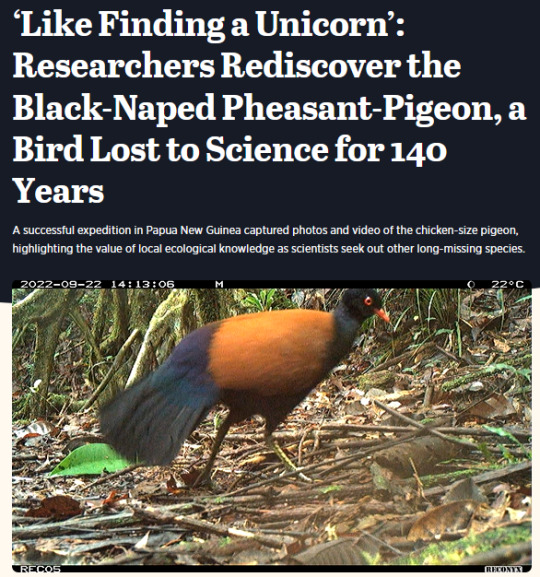
I like how the one dude had to sit down twice he was so overwhelmed
63K notes
·
View notes
Text
It's that time of year again where Mari Lwyd starts to be talked about and shared around and an INCREDIBLY misleading post gets shared a lot. As someone who grew up with Mari Lwyd I wanted to clear some things up.
Also hello, if you are unaware who Mari Lwyd is. This is about the Welsh tradition of the horse skull who visits houses during the Christmas to New Years period in Wales asking for alcohol.
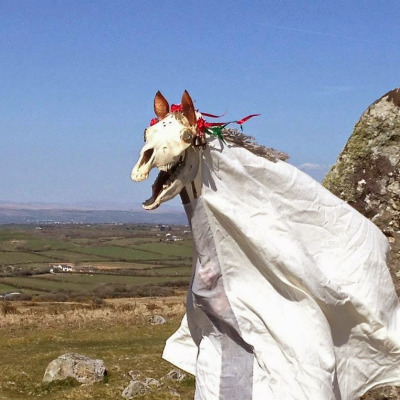
First off and probably the most important one:
Mari Lwyd is not a cryptid!
I can not emphasise this enough. She. Is. Not. A. Cryptid. There is no story or mystery about a ghost or zombie horse roaming the Welsh valleys. She's not even supposed to be a ghost or a zombie. It's just a horse skull on a stick with a guy under a sheet. She's a hobbyhorse and a folk character used to tell Welsh stories and keep songs alive. When people spread the misinformation that she's a cryptid, it's the equivalent of saying Kermit the Frog is a cryptid.
She is actually only one character in a wider cast of characters who go door to door or, in more modern times, pub to pub. The cast of characters can change town to town and village to village but there are some common ones I see time and time again. The Leader, the Merryman, The Jester and The Lady are just some I see regularly. Punch and Judy used to be more popular a few years ago but I haven't seen them in a while as their tradition has mostly fallen out of popularity. In most cases, almost the whole cast will be played by men. Even the characters are considered and referred to as female. Though this again depends and varies by which group is partaking in the Mari Lwyd tradition.
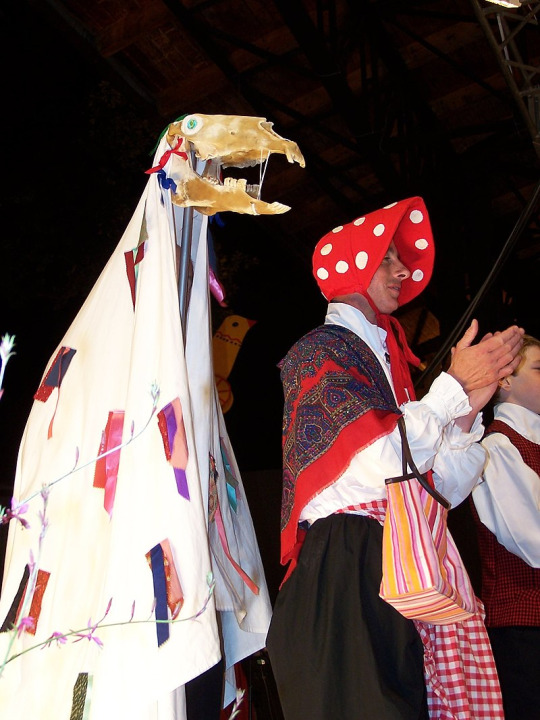
This point also goes onto my second point,
Mari Lwyd does not rap.
I think this comes from a very common misunderstanding of what rap is vs spoken word. Rap is a very specific style of music originating from the African American communities of the USA and has it's own structure and motifs unique to it. It's a lot more complex than people give it credit for as a style of music and just flippantly assign anything similar to it as being rap. If someone is talking fast or reciting poetry, it is not rap. Or anything that is an exchange of words between two people is not a rap battle. Mari Lwyd does not do rap, actually something that gets left out of these posts is the fact Mari Lwyd does not even speak. It's actually the Leader, who does all the speaking and song based banter between the house/pub owner for entry. Mari Lwyd just clicks her mouth, bites people and bobs her head around.
I think Mari Lwyd is a really beautiful and unique part of Welsh culture. She's not actually as wildly celebrated as a lot of the posts make her out to be. Actually, I think most Welsh people themselves learn about Mari Lwyd through the internet as well. Her popularity is increasing thanks to the drive of local groups wanting to keep the traditions alive and a renewed desire to document Welsh traditions before they're gone. Which is why it's such a shame that she's turned into something she's not to earn horror points on the internet. I think this is why it bothers me so much to see the misunderstandings of the culture and the folk tradition. Mari Lwyd's origin is very hot debated as well as how long it's been going on for. But I think it's thanks to a lot of traditions like this that the Welsh language and our stories weren't lost forever. Welsh culture is recovering as is the language. But it's still in a very fragile place. I think it's why it's important to document and correct information when it's spread.
Anyway, if you want to see the tradition in action, here's a lovely video from the Cwmafan RFC going to one of the pubs for charity. It includes the song exchange with the pub owner for entry and the whole pub singing and joining in once Mari Lwyd and the rest are inside.
youtube
As well with another video from St Fagan's showcasing the more traditional and door to door form with the larger cast.
youtube
19K notes
·
View notes
Text
I've had a hard time articulating to people just how fundamental spinning used to be in people's lives, and how eerie it is that it's vanished so entirely. It occurred to me today that it's a bit like if in the future all food was made by machine, and people forgot what farming and cooking were. Not just that they forgot how to do it; they had never heard of it.
When they use phrases like "spinning yarns" for telling stories or "heckling a performer" without understanding where they come from, I imagine a scene in the future where someone uses the phrase "stir the pot" to mean "cause a disagreement" and I say, did you know a pot used to be a container for heating food, and stirring was a way of combining different components of food together? "Wow, you're full of weird facts! How do you even know that?"
When I say I spin and people say "What, like you do exercise bikes? Is that a kind of dancing? What's drafting? What's a hackle?" it's like if I started talking about my cooking hobby and my friend asked "What's salt? Also, what's cooking?" Well, you see, there are a lot of stages to food preparation, starting with planting crops, and cooking is one of the later stages. Salt is a chemical used in cooking which mostly alters the flavor of the food but can also be used for other things, like drawing out moisture...
"Wow, that sounds so complicated. You must have done a lot of research. You're so good at cooking!" I'm really not. In the past, children started learning about cooking as early as age five ("Isn't that child labor?"), and many people cooked every day their whole lives ("Man, people worked so hard back then."). And that's just an average person, not to mention people called "chefs" who did it professionally. I go to the historic preservation center to use their stove once or twice a week, and I started learning a couple years ago. So what I know is less sophisticated than what some children could do back in the day.
"Can you make me a snickers bar?" No, that would be pretty hard. I just make sandwiches mostly. Sometimes I do scrambled eggs. "Oh, I would've thought a snickers bar would be way more basic than eggs. They seem so simple!"
Haven't you ever wondered where food comes from? I ask them. When you were a kid, did you ever pick apart the different colored bits in your food and wonder what it was made of? "No, I never really thought about it." Did you know rice balls are called that because they're made from part of a plant called rice? "Oh haha, that's so weird. I thought 'rice' was just an adjective for anything that was soft and white."
People always ask me why I took up spinning. Isn't it weird that there are things we take so much for granted that we don't even notice when they're gone? Isn't it strange that something which has been part of humanity all across the planet since the Neanderthals is being forgotten in our generation? Isn't it funny that when knowledge dies, it leaves behind a ghost, just like a person? Don't you want to commune with it?
39K notes
·
View notes












